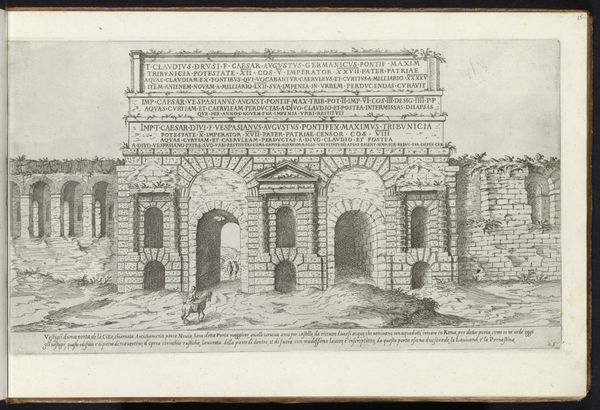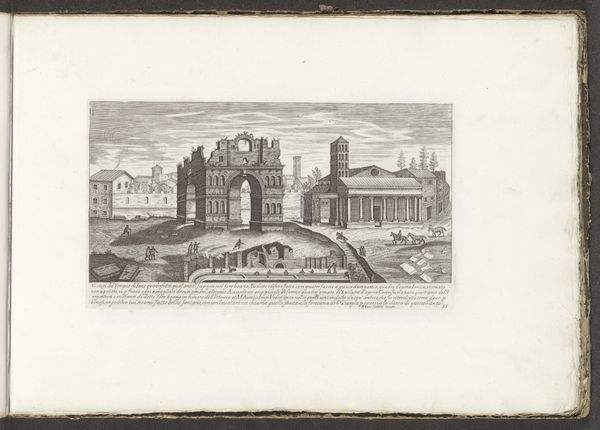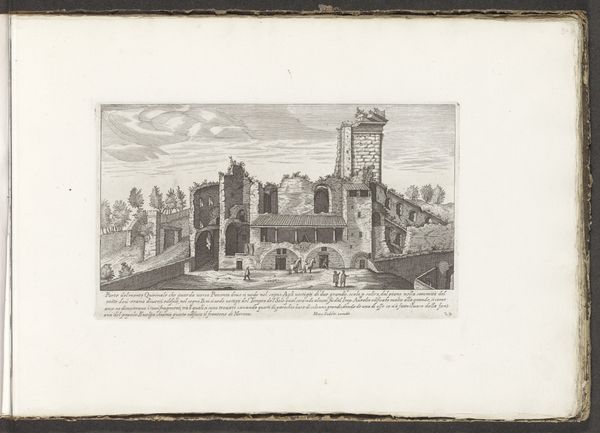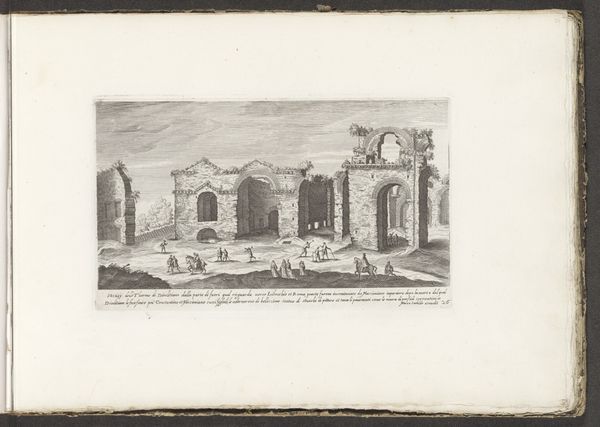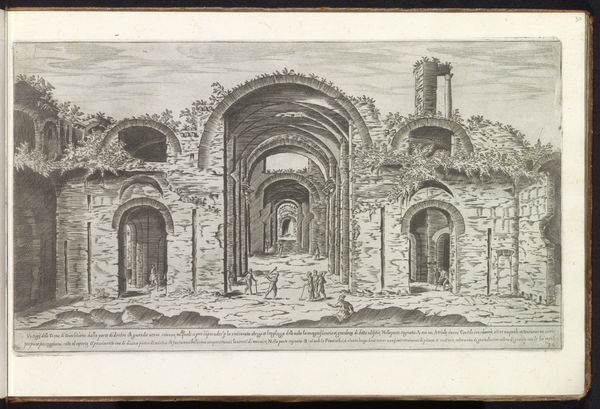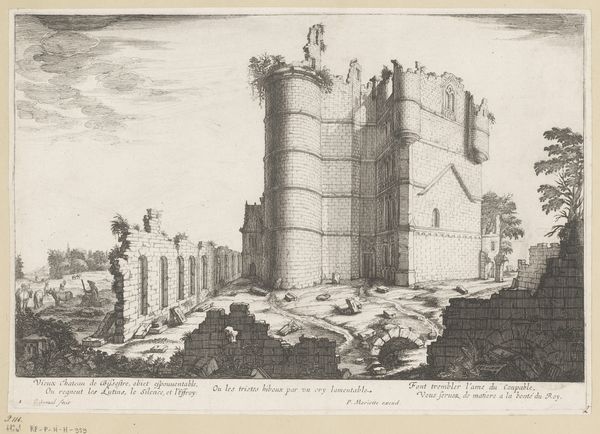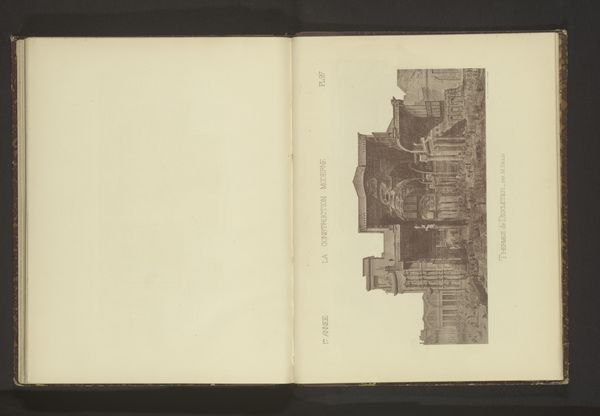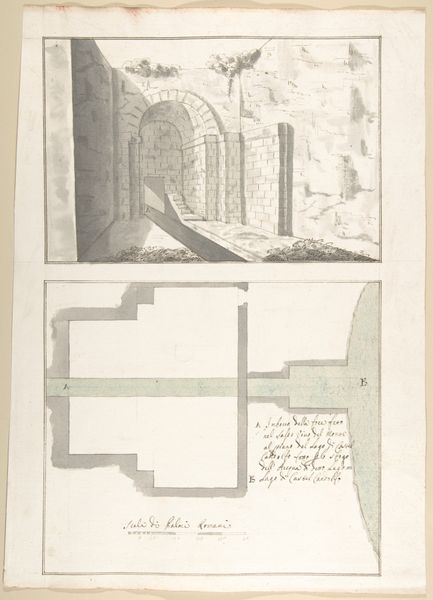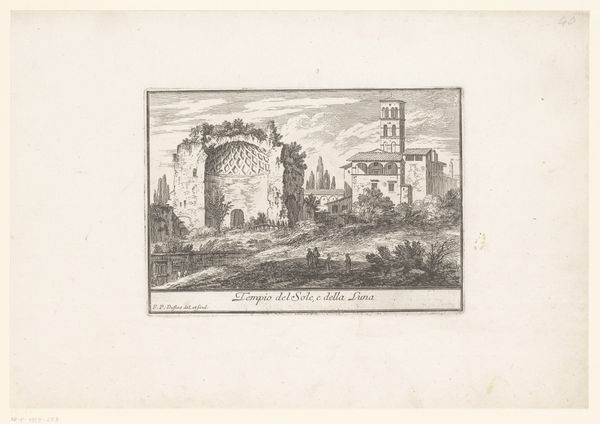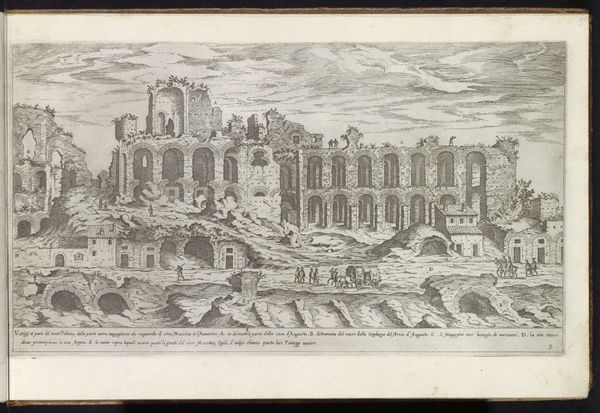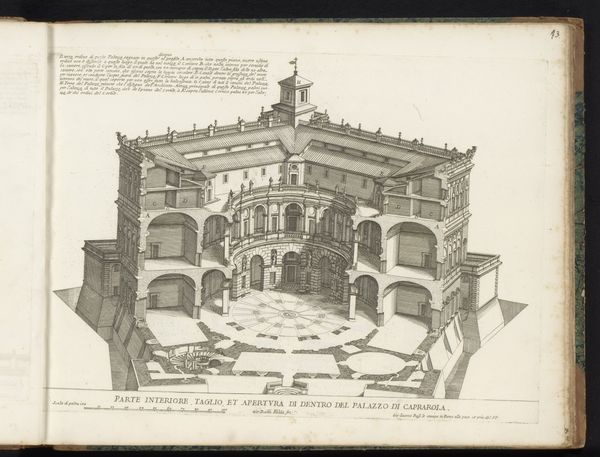
Graftombe van de vrijgelatenen en slaafgemaakten van de familie van Augustus c. 1756 - 1757
0:00
0:00
drawing, pen, engraving, architecture
#
drawing
#
pen sketch
#
old engraving style
#
line
#
pen work
#
pen
#
history-painting
#
engraving
#
architecture
Dimensions: height 371 mm, width 491 mm, height 38 mm, width 489 mm
Copyright: Rijks Museum: Open Domain
Editor: This engraving from 1756-1757, "Graftombe van de vrijgelatenen en slaafgemaakten van de familie van Augustus" by Girolamo (II) Rossi depicts a rather monumental tomb. It looks austere. How do you interpret this work? Curator: This piece compels us to confront the deeply rooted and often romanticized history of power and servitude within the Roman Empire, and also within European colonial powers. Who gets remembered, and how? Consider how the tomb's architecture itself—imposing yet decaying—might symbolize both the enduring legacy and the inherent fragility of empires built on exploitation. Editor: I hadn't thought about the decay aspect so overtly. The emphasis of the tomb’s imposing form had distracted me, I guess. What message was Rossi trying to convey? Curator: It’s difficult to know Rossi’s intent centuries later, but think about the period he was working in, the mid-18th century. Europe was benefiting greatly from the riches extracted from colonized lands, so an image like this one—focused on a historical site linked to a family named Augustus, no less— might cause his audience to contemplate power. What visual cues draw you to particular areas in the image? Editor: The little cubicles – niches? – where the urns are stored really dominate. It really feels like a wall, a barrier to entry. It seems so impersonal somehow, for what is supposed to be honoring someone. Curator: Exactly. Consider then, how architecture has been used to either deny or assert identity over centuries. Perhaps the artist challenges us to critically consider whose stories are told and preserved within the grand narratives of history and empire. What are the power dynamics that make such commemorations possible, and at whose expense? Editor: Seeing it that way, it’s impossible not to see the inequalities baked into even commemorative artistic practices. I will definitely rethink the role of power in art and history! Curator: Excellent, let's continue to question the narratives art presents and to challenge the inequalities they may uphold.
Comments
No comments
Be the first to comment and join the conversation on the ultimate creative platform.

